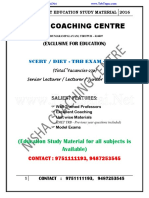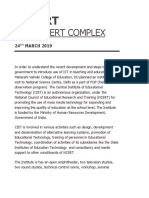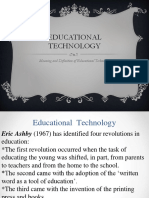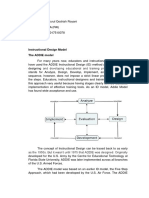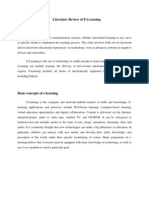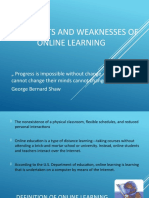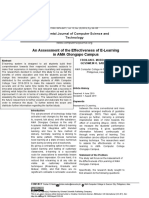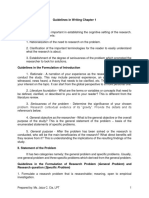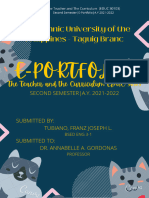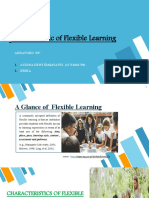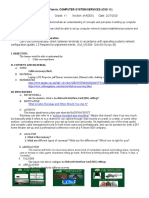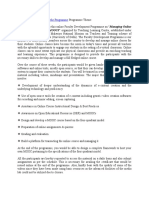0% found this document useful (0 votes)
242 views5 pagesE Learning Notes
E-learning utilizes computers and digital technology for education, offering flexibility in learning schedules and a variety of multimedia resources. It is employed in workplaces for training and in schools for additional support, with teachers adapting their roles to focus more on personalized assistance. While e-learning provides numerous advantages such as customizable learning and individualized support, it also presents challenges like the need for self-discipline and a preference for in-person interactions.
Uploaded by
levi makokhaCopyright
© © All Rights Reserved
We take content rights seriously. If you suspect this is your content, claim it here.
Available Formats
Download as PDF, TXT or read online on Scribd
0% found this document useful (0 votes)
242 views5 pagesE Learning Notes
E-learning utilizes computers and digital technology for education, offering flexibility in learning schedules and a variety of multimedia resources. It is employed in workplaces for training and in schools for additional support, with teachers adapting their roles to focus more on personalized assistance. While e-learning provides numerous advantages such as customizable learning and individualized support, it also presents challenges like the need for self-discipline and a preference for in-person interactions.
Uploaded by
levi makokhaCopyright
© © All Rights Reserved
We take content rights seriously. If you suspect this is your content, claim it here.
Available Formats
Download as PDF, TXT or read online on Scribd
/ 5









